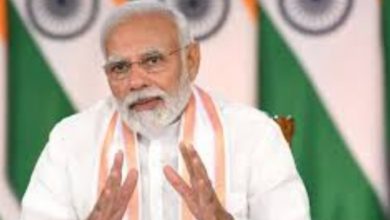A quarter of Canadians are now immigrants; largest proportion from India

Indians account for 18.6 per cent of the total number of people who immigrated to the country between 2016 and 2021, as per newly released census data.
Over 2.46 lakh Indians immigrated to Canada during this period of which 1.28 lakh were men and 1.18 lakh were women. Other key immigrant groups were Filipinos and people from Africa, said the Statics Canada report.
The report released on October 26 found that the country’s population has increased 5.3% in the past five years, bringing it up to nearly 37 million.
A quarter of Canadians are now immigrants, accounting for 23% of the overall population. This was the largest proportion since 1921 (22.3%). If the trends continue, the census bureau estimates that immigrants could represent 29.1% – 34% of the country’s population 2041.
With an ageing population and low fertility rates, immigration is one of Canada’s main suppliers for the workforce. A Statics Canada report released earlier said that the country’s population of people of working age (15 to 64 years) is the oldest it has ever been while the fertility rate has further declined to a record low of 1.40 children per woman in 2020, far below the no-migration population replacement level of 2.1 children per woman.
Both these numbers were further hit the difficulties brought in the Covid-19 pandemic.
Even before the pandemic, Canada had put in place a robust point system to attract skilled workers from around the world. The demand for tech-related jobs, relatively cheaper higher education opportunities and easier citizenship options had attracted numerous Indians to the northern nation. The census report released on Wednesday said that more than 64% of people who immigrated to Canada between 2016 and 2021 were between 25 to 54 years, and in a position to contribute to the country’s workforce.
Post-pandemic in May 2022, Canadian Prime Miner Justin Trudeau unveiled a plan to bring in a further 1.3 million immigrants in the coming three years to support economic growth in the country.
Ontario most popular
Ontario has emerged as the most popular among Indians, with more than 55% of the Indian immigrant population finding a home in the province that includes cities like Toronto, Ottawa, Waterloo, and Brampton, among others.
Toronto in particular has been a hub for Indians. The city is one of Canada’s premier economic engines and is home to several tech companies. Named of the most expensive cities in the country Mercer’s 2022 Cost of Living survey, the city and the surrounding Greater Toronto Area (GTA) are among the top destinations for skilled immigrants.
The province of British Columbia too hosts a sizable Indian population. Nearly 22% of Indians are spread across cities like Vancouver, Victoria, Kelowna and others. As many as 13.6% of Indian immigrants live in Alberta province. Manitoba, Quebec and Saskatchewan too have significant Indian populations.
Punjabis, Tamilians galore
The census revealed that besides Punjabi, a significant number of people reported Tamil, Hindi, Gujarati, Malayalam and Telugu as their mother tongues. While 1.8% of the respondents said their mother tongue is Punjabi, 0.4% said their mother tongue is Tamil, Hindi or Gujarati and 0.1% said theirs is Malayalam or Telugu. A small population of people recorded Kannada as their mother tongue as well.
Overall, 51.5% of immigrants in Canada were born in Asia, 23.5% were born in Europe and 14.4% in the Americas. However, over the last five years, the number of Asian immigrants has gone up significantly. Between 2016 and 2021, 62% of immigrants came from Asia while only 10.1% came from Europe and 11.6% from the Americas.
Over 2% of Hindus
In terms of religion, Chrians still make up more than half of Canada’s population with over 53% identifying themselves as such. However, this is a marked decrease from the previous years — in 2001, 77.1% of the population identified as Chrians while it fell to 67.3% in 2011.
Hindus now make up 2.3% of the population, up from 1.45% in 2011 and 0.96% in 2001. The Muslim population too has increased to 4.9% from 3.2% in 2011 and 2% in 2001. Sikh population now stands at 2.1%, up from 1.38% in 2011 and 0.94% in 2001.





